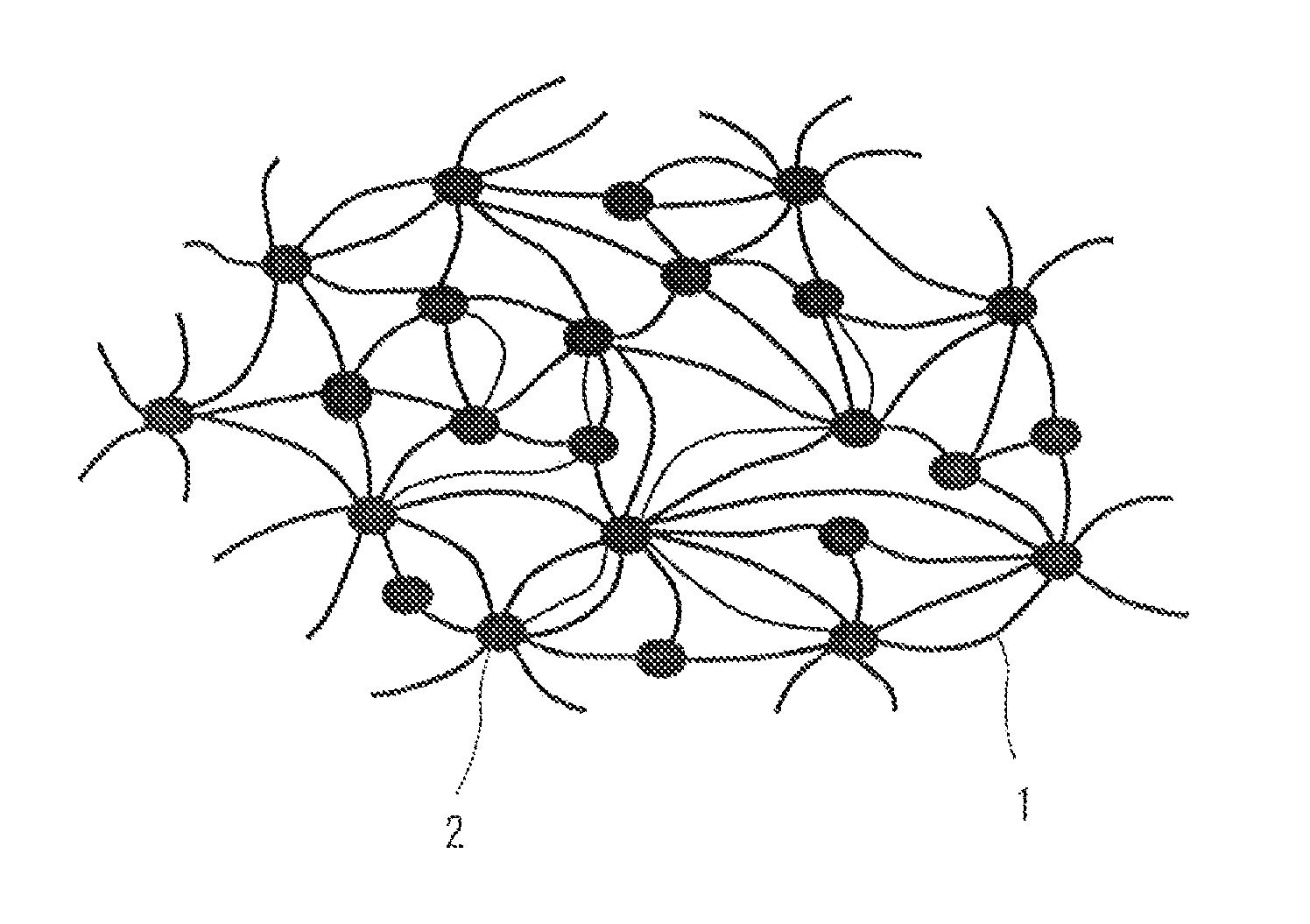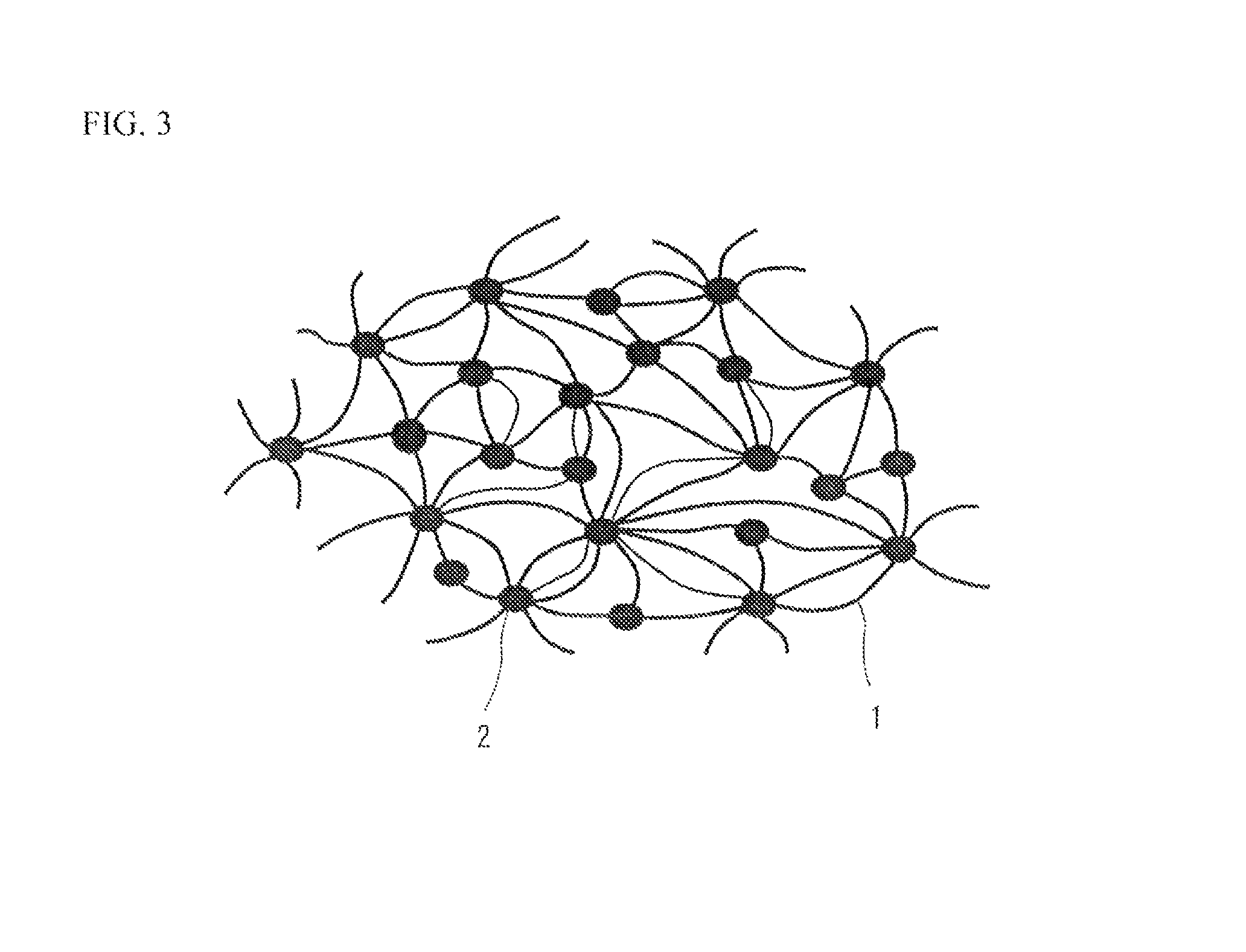Expanded porous polytetrafluoroethylene film-laminated sheet, and gasket composed of said sheet
a technology of porous polytetrafluoroethylene and film-laminated sheets, which is applied in the field of sheets, can solve the problems of deterioration in the productivity of sheet gaskets, film peeling, and difficult to distinguish between nodes and fibrils, so as to improve adhesiveness, improve creep resistance, and improve the effect of adhesiveness
- Summary
- Abstract
- Description
- Claims
- Application Information
AI Technical Summary
Benefits of technology
Problems solved by technology
Method used
Image
Examples
example 1
[0048]A paste obtained by adding, to a PTFE fine powder (“CD123” available from Asahi Glass Co., Ltd.), solvent naphtha as a lubricant in an amount of 17% by mass, and mixing these materials, was compressed into a cylindrical shape. The compressed product was preheated at a temperature of 60° C., and then paste extruded under the conditions that the reduction ratio (R.R.) was 160:1 and the extrusion speed was 15 m / min. After the extrusion, rolling was carried out to obtain a tape having a thickness of 0.6 mm. This tape was subjected to preliminary expansion (extension treatment) in the transverse direction, while keeping the temperature at 80° C., under the conditions that the expansion ratio was 6 times and the expansion speed was 180% / sec, and then, the lubricant was removed by drying. Then, the tape was expanded in the machine direction (length direction), while keeping the temperature at 300° C., under the conditions that the expansion speed was 400% / sec and the expansion ratio ...
PUM
| Property | Measurement | Unit |
|---|---|---|
| thickness | aaaaa | aaaaa |
| surface pressure | aaaaa | aaaaa |
| density | aaaaa | aaaaa |
Abstract
Description
Claims
Application Information
 Login to View More
Login to View More - R&D
- Intellectual Property
- Life Sciences
- Materials
- Tech Scout
- Unparalleled Data Quality
- Higher Quality Content
- 60% Fewer Hallucinations
Browse by: Latest US Patents, China's latest patents, Technical Efficacy Thesaurus, Application Domain, Technology Topic, Popular Technical Reports.
© 2025 PatSnap. All rights reserved.Legal|Privacy policy|Modern Slavery Act Transparency Statement|Sitemap|About US| Contact US: help@patsnap.com



